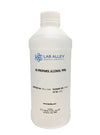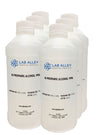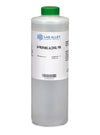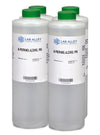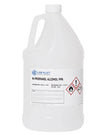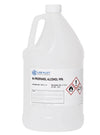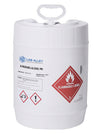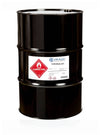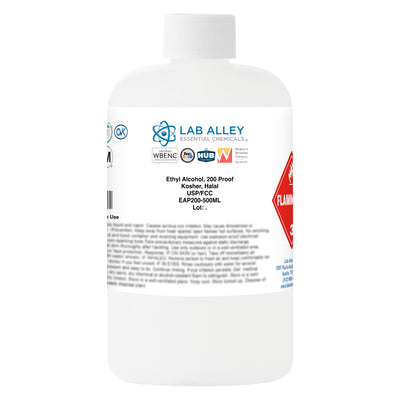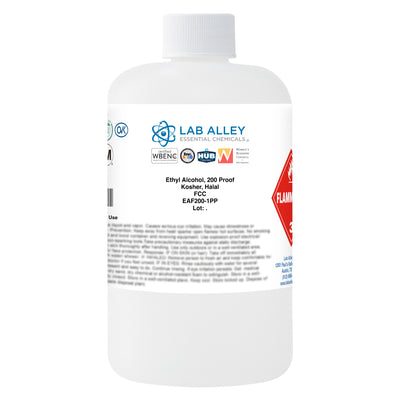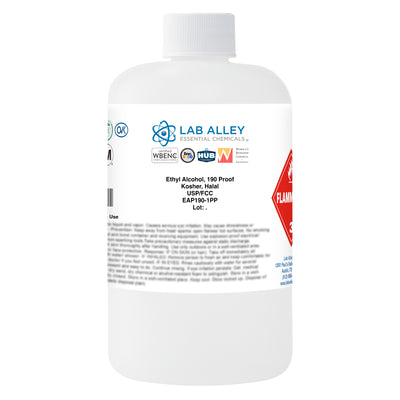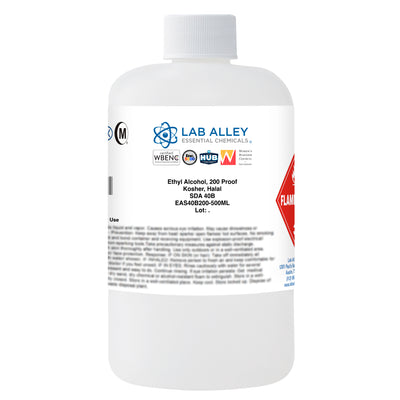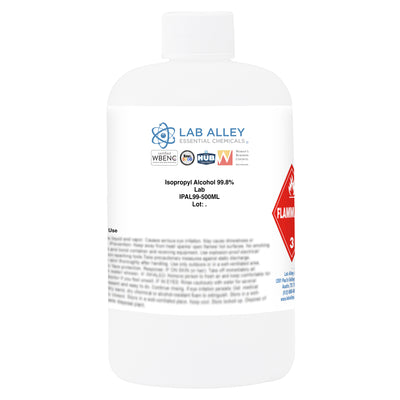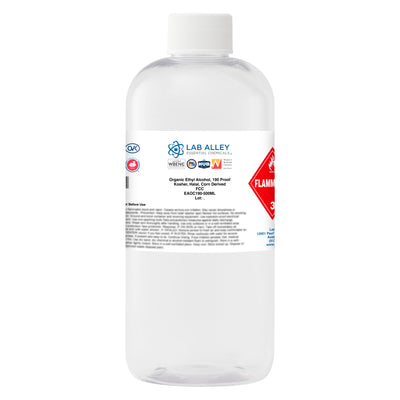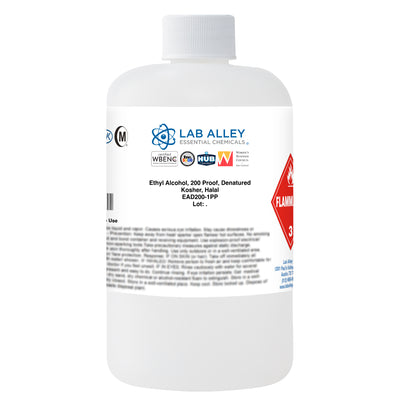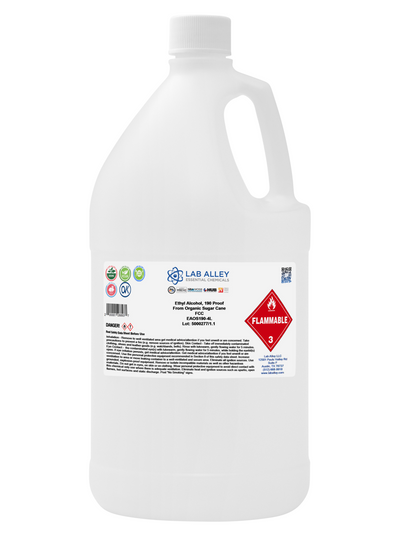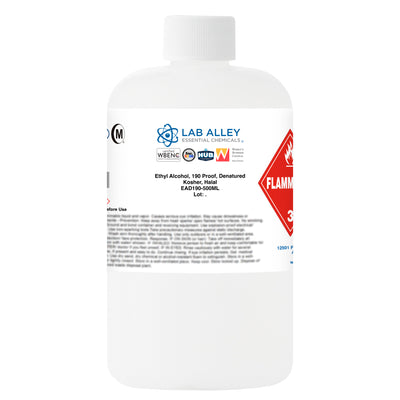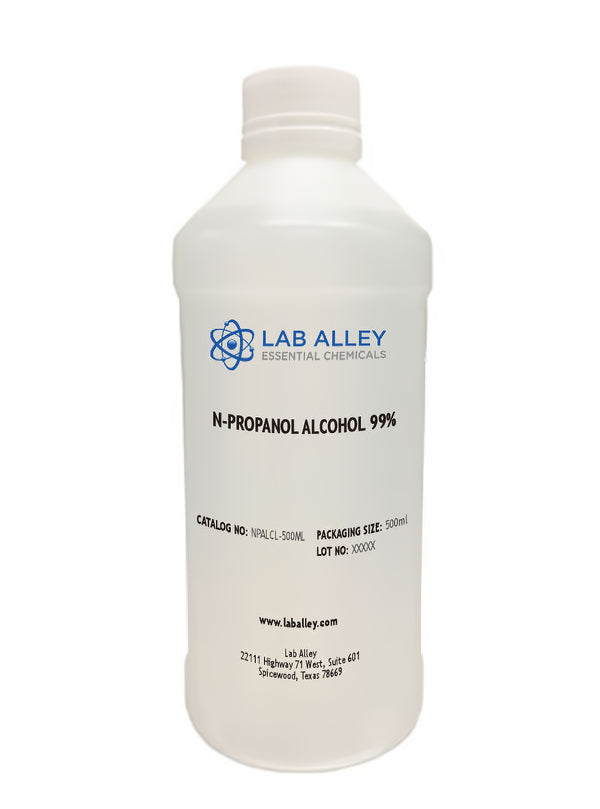
Business Support
n-Propanol 99%


Solvent, Fuel Additive, Degreasing Agent, And Antifreeze Component
Business Support
Description
About n-Propanol 99%
n-Propanol is a clear, colorless liquid at room temperature with an odor like that of rubbing alcohol (Isopropyl Alcohol). It is miscible with water and is highly flammable. n-Propanol is used as a general solvent, fuel additive, degreasing agent, and component in antifreeze. It is naturally formed in small amounts during fermentation processes. It is found as an ingredient in many personal care products where it acts as a solvent and disinfectant. Lab Alley n-Propanol 99% has a high purity. Chemicals offered at such purity levels are suitable for use in analytical labs requiring repetitive, consistent, and reliable results.
COMMON USES AND APPLICATIONS
- Industrial and domestic cleaner
- DNA Extraction
- General solvent
- Chemical manufacture as a reagent
INDUSTRIES
- Chemical
- Cleaning
- Paint And Ink
- Automotive
- Personal Care & Cosmetic
- Medical
PRODUCT INFORMATION
Customer Reviews and Q&A
Safety and Shipping
n-Propyl Alcohol Shipping Information:
DOT: n-Propyl Alcohol, 3, UN1276, PG II
Business Support
Built for Business.
At Lab Alley, we simplify procurement with custom quotes, credit applications, tax exemptions, and fulfillment support, ensuring on-budget, on-time delivery - your success is our priority.
Apply for Credit
A Lab Alley credit account streamlines purchasing for your business. Our Customer Success Team is available to help you through every step of the process.
Request a Custom Quote
Get a fast, customized quote tailored to your specific needs. Our team ensures accurate pricing and availability to help streamline your purchasing process.

Additional Business Resources
Lab Alley provides access to essential certifications, documents, and other resources to support your business.

Create a Lab Alley Account

RECEIVE exclusive offers, promotions, and discounts on chemicals.

Always have the product you need, when you need it with our AUTOSHIP program.

